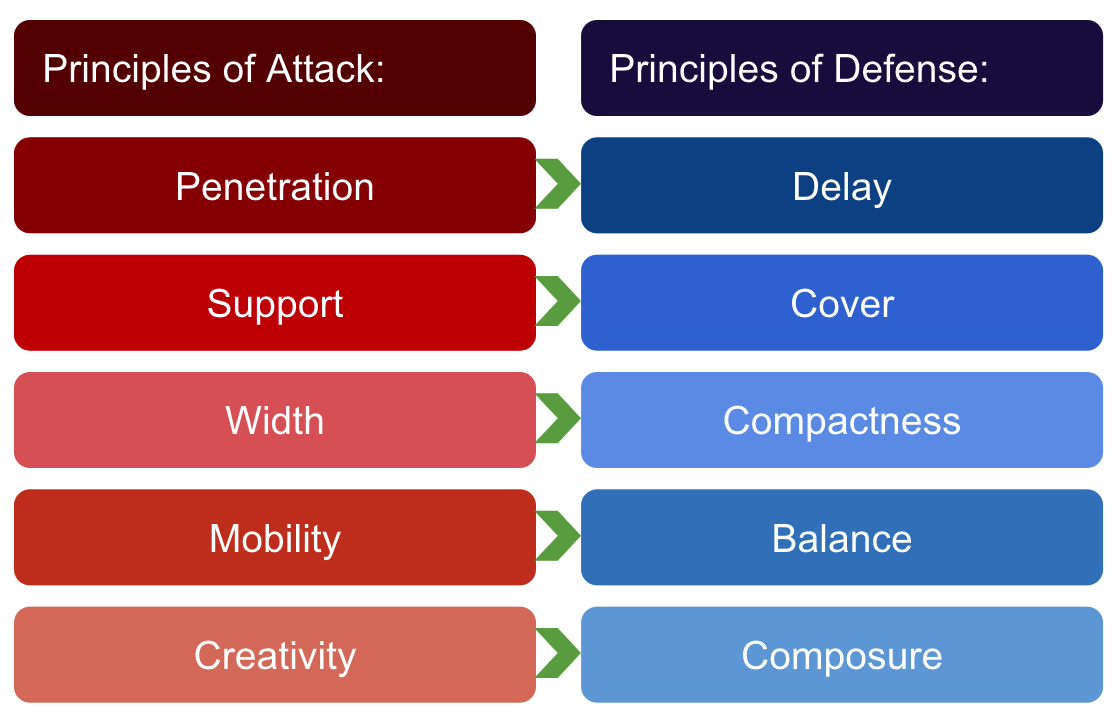Principles of Attack and Defense
For coaches that are looking to organize their thoughts and sessions around particular concepts, a great place to start is around the 5 major principles of attack and the corresponding principles of defense. Understanding this framework will also help you analyze your team for areas of improvement.
Principles of Attack:
- Penetration – The act of advancing the ball forward. This involves dribbling, passing, and shooting. Starting with a transition (gaining possession), what should each player be doing to help with that objective
- Support – This is giving the teammate in possession options in all directions. This is all about player movement off ball
- Width – Leveraging the whole field, stretching a defense to create passing lanes, and creating space to move the ball are all covered here
- Mobility – How can players strategically leave or switch positions to create numerical advantages in various situations
- Creativity – This is how and when to take calculated risks to surprise the defense. This includes fakes/feints
Principles of Defense:
- Delay – How to slow down the attack until the defense can: regain its shape, restore numerical advantage, and help arrives to challenge the ball carrier
- Cover – Closing down passing options
- Compactness – Denying the opponent seams in the defense to pass the ball through and denying them space to maneuver
- Balance – Providing adequate numerical advantage to delay the opponent and eventually regain possession
- Composure – The act of keeping with sound defending principles while under attack. Expecting the unexpected
Here is a two-part resource put together by the National Soccer Coaches Association of America (NSCAA) that provides specific coaching points and drills to help focus on each principle:
